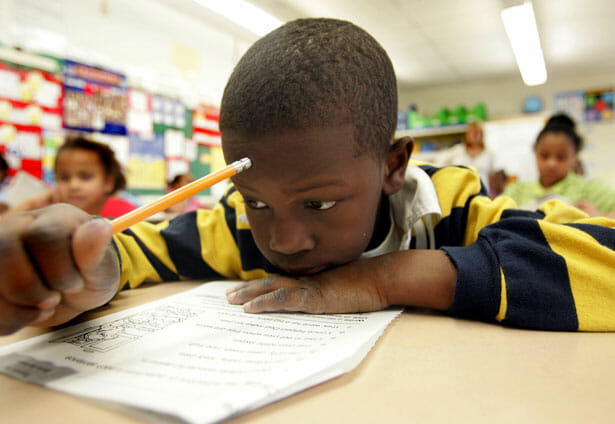
Brazil performs below the average in mathematics (ranks between 57 and 60), reading (ranks between 54 and 56) and science (ranks between 57 and 60) among the 65 countries and economies that participated.

Marcelo Knobel
Full Professor of the Instituto de Fisica "Gleb Wataghin" (Gleb Wataghin Physics Institute), of the Universidade Estadual de Campinas (University of Campinas, UNICAMP).
By Marcelo Knobel
January 12, 2014
Since unveiling the 2012 PISA assessment of 15-years-old results in early December, 2013, I have been considering writing about these data and their implications for higher education in Brazil. However, I must confess that many discussions and analysis that appeared in the media and some specialized blogs have overwhelmed me.
In a few words, the results of the PISA are disastrous: Brazil performs below the average in mathematics (ranks between 57 and 60), reading (ranks between 54 and 56) and science (ranks between 57 and 60) among the 65 countries and economies that participated in the assessment.
Interestingly, as soon as the results were published, the Minister of Education of Brazil considered the results great, claiming that the “picture is still not good, but if you look at the movie, it is”.
He was referring to the relative improvement of the country in the last 10 years. For example, in mathematics Brazil grew from 356 points in 2003 to 391 score points in 2012, making Brazil the country with the largest performance gains since 2003.
Some improvements were also found in reading and science.
As mentioned before, many analysts have been discussing the possible cause of this singular apparent improvement, particularly in mathematics.
Besides the improvements in the economic, social and cultural status of the student population, as already pointed out in the OECD report, many other hypothesis have surfaced.
One can consider the improvement of the assessment itself (with better-calibrated questions), the changes in the relative proportion of tested students (from different backgrounds and regions), and the reduction of the distortion age cohort/grade of the students, among others.
There are also many critics to the “one size fits all” intrinsic nature of the test, and the construction of a ranking based on a rather complex indicator.
Give the Gift of Learning
We cannot do great work without your help. So please consider Holistica Foundation in your decisions about charitable giving.
In any case, even taking into account all the criticism and associated errors of the scoring (which, indeed, makes it very difficult to depict any clear trend for such a reduced number of data points), the Brazilian results are worrying, compromising the future of any sustainable growth of the nation.
More than 67% of the students are low performers in mathematics, meaning that they can hardly extract relevant information from a single source or use basic algorithms, formulae, procedures or conventions to solve problems involving whole numbers.
According to OECD standards they don’t have enough math to keep learning at school or to compete in the labor market.
This proportion is decreasing from an even higher share in 2003 (around 75%).
In other words, the mathematical illiteracy rate apparently improved, from 3/4 to 2/3 of the participating students.
In fact, it is worth remembering that only students enrolled in formal education participated in the test, which accounts for 78% of the age cohort in Brazil.
Only about 1% of the students are top performers in mathematics (levels 5 and 6), meaning that they can develop and work with models for complex situations and work strategically using broad, well-developed thinking and reasoning skills. It is worth mentioning that this level is the minimum required for any student who would consider a postsecondary study in the STEM fields.
If ones makes a very rough estimate, the number of students who meet these very minimum requirements in Brazil would be only around 150,000 – 200,000 youngsters (Compare this with a total number of more than one million places in HEI every year).
Additionally, some 61% of Brazilian students are low performers in science, meaning that, at best, they can present scientific explanations that are obvious and respond to explicit scientific evidence.
Only .03% are top performers, meaning that they can identify, express, explain and apply scientific knowledge in a variety of complex life situations.
In reading, the results are similar. Only one in two-hundred students (0.5%) perform at or above Level 5, meaning that they can handle texts that are unfamiliar in either form or content and can adeptly analyze texts.
On the other hand, about half of students in Brazil performed below the baseline level of proficiency (Level 2), meaning that, at best, they can recognize the main theme or the author’s purpose in a text about a familiar topic and make a simple connection between information in the text and everyday knowledge.
In Brazil, more than one in three (36%) 15-year-old students have repeated a grade at least once in primary or secondary school; many were held back more than once.
This is one of the highest rates of grade repetition among countries participating in PISA.
Between 2003 and 2012, the proportion of 15-year-olds who had repeated a grade in primary school declined, but the prevalence of grade repetition increased in upper secondary school. The pervasiveness of grade repetition in Brazil has been linked to high dropout rates, high levels of student disengagement, an average of three extra years for students to complete the nine grades of primary school.
Grade repetition is negatively associated with performance in mathematics and it is more prevalent among disadvantaged students.
Although Brazil has made considerable progress in student’s access to a fundamental level education, the inclusion of more students has not been accompanied by needed quality improvement.
The levels of very low-performing students, high repetition and dropout rates, low expectations and lack of motivation are striking and reflect a dreadful picture of the basic levels of education.
Obviously, this situation has implications for higher education, which receives a flux of mostly unprepared students, even in a situation where the net enrollment rate in HE is only around 14% of the 18-24 years old age cohort. It is not surprising that the dropout rates in HE are even higher (above 50%), and the quality of many universities is questionable.
An emerging economy with the strength of Brazil must reflect and act immediately to change this scary situation. Suggestions are welcome…
This article was reproduced in full from Inside Higher Ed’s website: https://www.insidehighered.com/blogs/world-view/brazils-scary-pisa-results
Give the Gift of Learning
We cannot do great work without your help. So please consider Holistica Foundation in your decisions about charitable giving.



